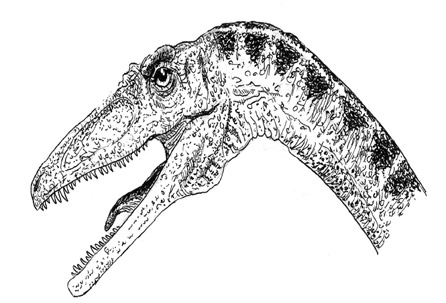How did Coelophysis get its Name?
Coelophysis – “Hollow Form”
Recently, one of the Everything Dinosaur team members was asked by a young dinosaur fan about Coelophysis. This young palaeontologist, perhaps starting out on a journey of discovery that would make her as famous as other notable females in this science such as Mary Anning or Angela Milner of the Natural History Museum, asked why Coelophysis had such a “funny name”.
Coelophysis
Coelophysis (the name is pronounced see-loh-fie-sis), was a small, agile dinosaur whose fossils have been found in Middle to Late Triassic strata of the western United States. This 2-3-metre-long dinosaur (Coelophysis bauri – holotype) had long back legs and front legs designed for snatching and grasping prey. The slender head was narrow and the jaws filled with many needle-like teeth. The head was balanced on a long flexible neck and the animal had a long tail. The name Coelophysis means “hollow form”.
An Illustration of the Head of Coelophysis

Picture credit: Everything Dinosaur
The first fossils of Coelophysis were discovered in the United States in the late 1880s. This dinosaur was formerly named and described by the famous American palaeontologist Edward Drinker Cope in 1889. He described Coelophysis from the partial and fragmentary remains that had been discovered to date. Unlike other dinosaurs, the leg bones of Coelophysis were nearly completely hollow, and it is from this feature that Cope named this dinosaur.
To view models of Coelophysis and other theropod dinosaurs: Wild Safari Prehistoric World.
A Triassic Theropod
It was not until 1947 that the first complete fossils of this Triassic theropod were found. A Coelophysis “graveyard” was discovered in New Mexico at the now famous Ghost Ranch location. It is from these superbly preserved specimens that scientists were able to build up a more complete picture of this early dinosaur.
The Ghost Ranch site is still providing scientists with lots of information about the fauna and flora of the Triassic, to read an article about the discovery of a new type of dinosaur, perhaps a predator of Coelophysis, click on the link below.
To read more about this discovery: New Theropod Fossil Provides Evidence of Dinosaur Diversification.

